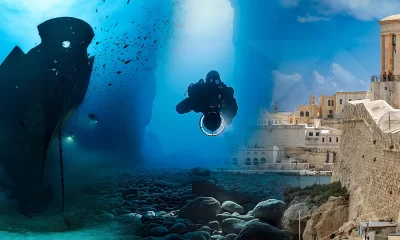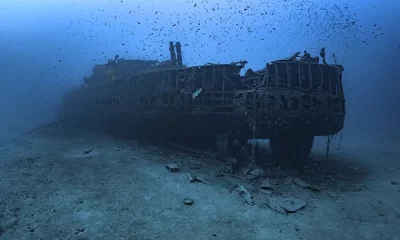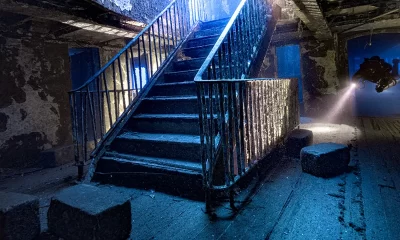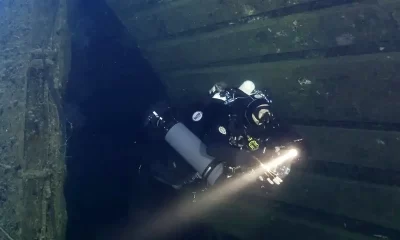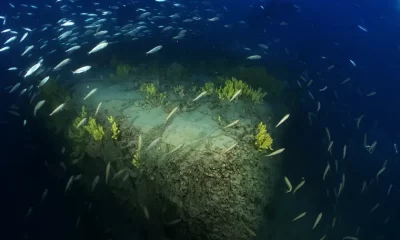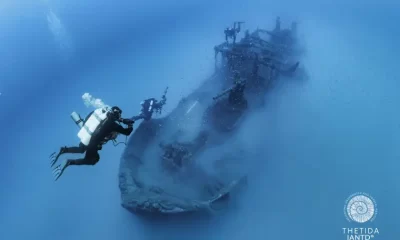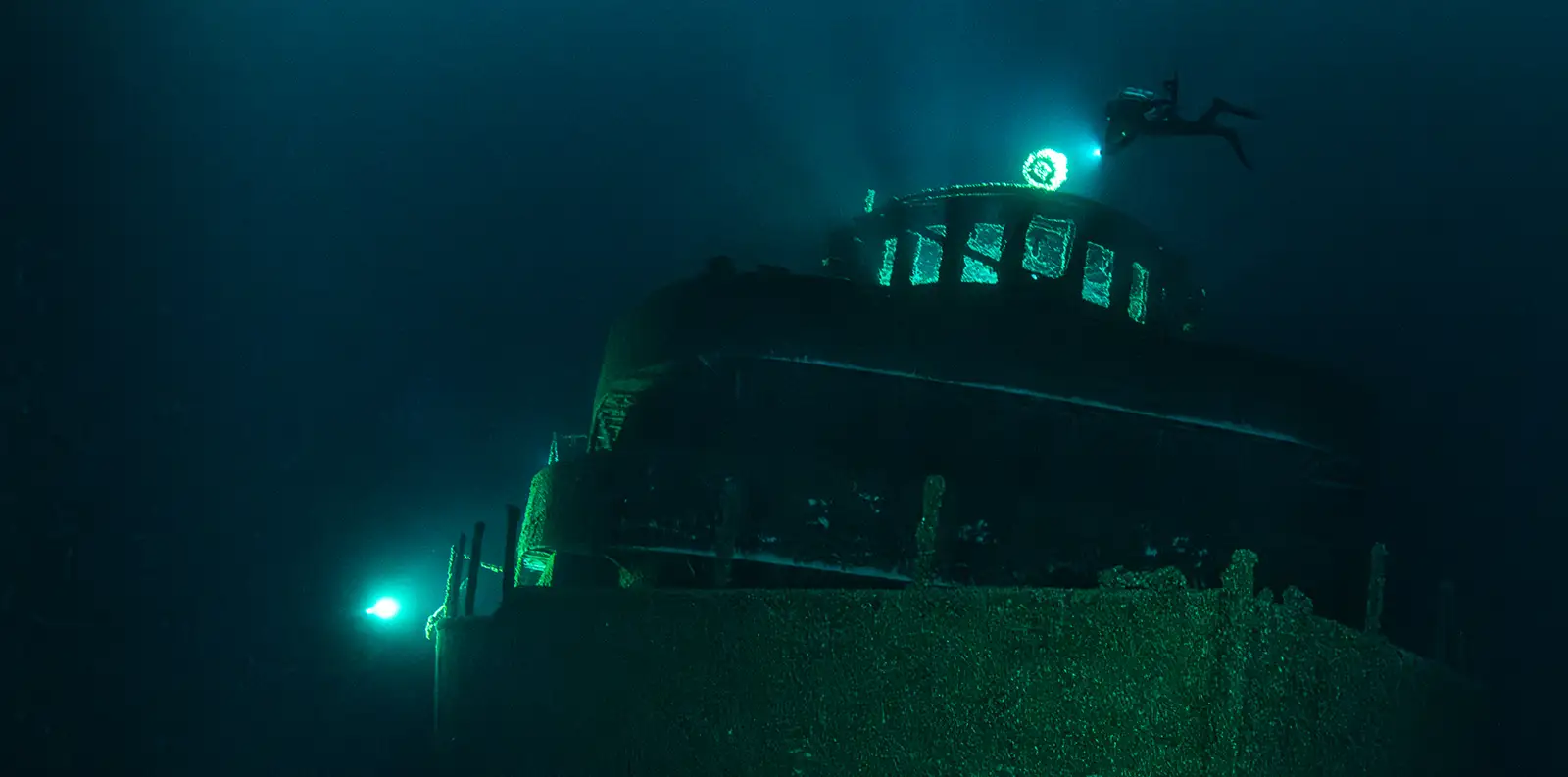
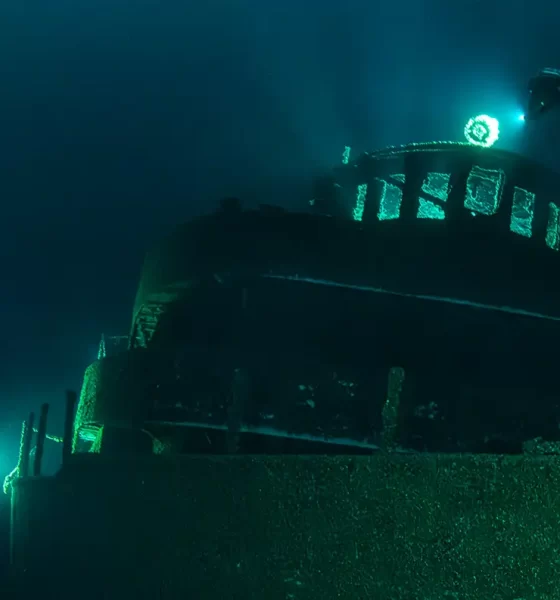
Latest Features
Braving the Mysterious Bradley
Lying more than 110 meters deep in the remote frigid depths of the Great Lakes’ Lake Michigan, the “Carl D Bradley” has remained an elusive target for tekkies. Fortunately for us, shipwreck explorer and photographer Jeff Lindsay takes us for a deep dive on the ill-fated lake freighter, which sank in 1958.
Text and images by Jeff Lindsay
After more than 30 years of diving the Great Lakes, one shipwreck above all has remained an elusive target for me. Extremely remote, rarely photographed, and with an almost mythical reputation as one of the most challenging dives in all the Lakes, the Carl D. Bradley proved to be every bit worthy of an expedition for our team in the summer of 2023.
Our plan to visit this off-the-grid site took shape several years before our group splashed into the cobalt blue waters of Lake Michigan. Having talked to divers that had previously seen the Bradley, I was discouraged from attempting it due to depth, remote setting, poor visibility, and extreme cold. In my mind, all of these challenges were negated by the legend and sheer size of the Bradley—the largest diveable shipwreck in all the Great Lakes*.
The Carl D. Bradley was built in 1927 to deliver limestone from its home port in Rogers City, Michigan. No expense was spared in her construction as she was to be the flagship of the fleet at 195 m/639 ft long—the largest ship on the Great Lakes when completed. Thirty-one years later, the aging Bradley had completed her last delivery of the 1958 season; she was headed for winter layup and repairs when the order came down from HQ to change course and pick up one last load of stone.
This course change put the ship directly in the path of a fierce November storm. Howling winds, 12 m/40 ft waves, and freezing water proved too much for the Bradley; the ship snapped in two, the crew sent a distress call, and HQ gave the order to abandon ship. Fifteen hours later, only two men from the crew of 35 survived to tell the tale. When rescued by the US Coast Guard, they were described as “more dead than alive.”
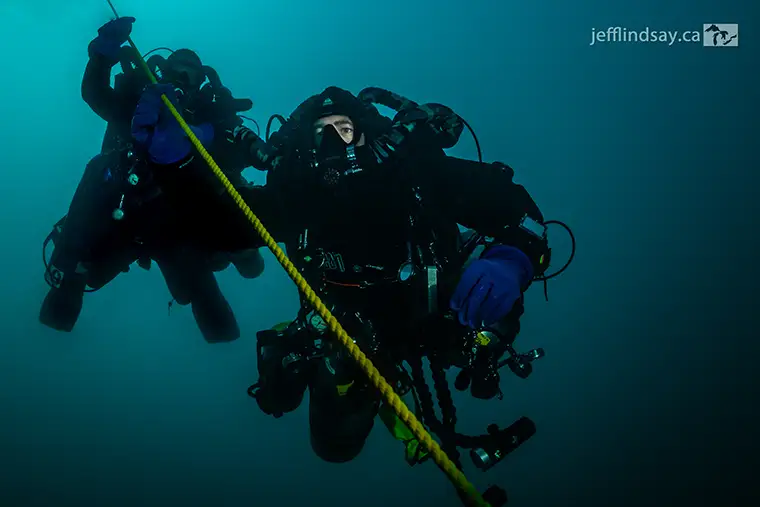
Making The Dive
Diving in northern Lake Michigan presents logistical challenges that our team had to overcome. There are no active charters that run to the Bradley, so we hired Shipwreck Adventures (Greg Such) to provide the dive boat and based our operations in Manistique, Michigan. Dive shops and fill stations seem non-existent on Michigan’s Upper Peninsula, so gas planning and bailout contingencies were determined well in advance. The Carl D. Bradley lies approximately 37 km/23 mi directly south in the open lake with no shelter from wind in any direction. It would be necessary to remain on site for a significant amount of time to complete the dives; we needed a calm weather window to be successful.
The first two days saw poor weather conditions that grew worse throughout the day, forcing us to return to port. By day three, the weather forecast predicted a calm window mid-day. A 4 AM start was necessary to meet the required timeline—strong coffee was in order.
Our team consisted of: Captain Mike Theobald, Bob Larson, Steve Stauch, Jim Beedell, Brian Gough, Terry Irvine and me. As large as the Bradley is, it’s still difficult to locate as there are no mooring lines or buoys to identify its resting place. Our team was prepared with side-scan sonar and 150 m/500 ft of line that we planned to install and leave in place. Identifying what we believed was the bow (our preferred target), Bob and Steve hot dropped and successfully attached the mooring line, enabling the boat to tie up and the rest of the team to splash.
Free falling into 114 m/375 ft of water does give one time to contemplate the life decisions that brought one to this particular moment. I felt fortunate to be able to lean on a great team of divers who supported my need to photograph this giant ship and who shared my love of exploration.
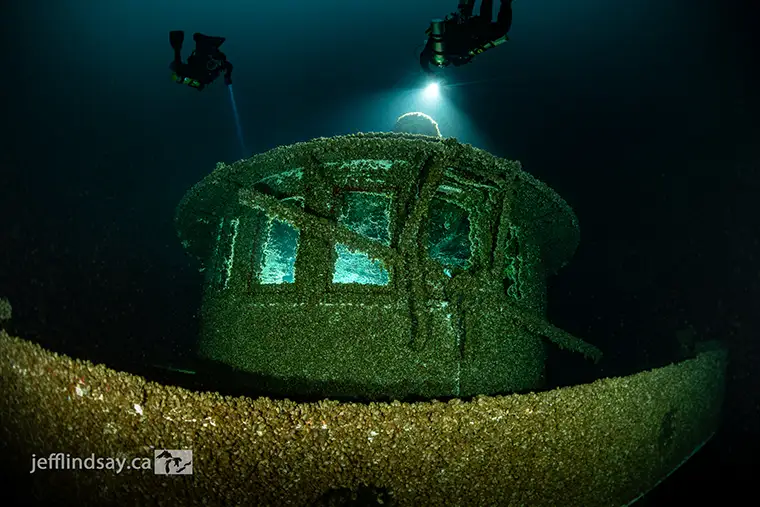
We found the roof of the pilot house at 91 m/300 ft. I oriented myself in the dim light, quickly placed video lights, and headed toward the bow hoping to make the scene that I had imagined for so long a reality. The visibility proved much better than what was expected and, after a short distraction—how small the team members looked compared to the ship—I got down to business with the camera.
Glass portholes, railings, stairs—everything on this ship was as it should be. Paint was still visible under the coating of mussels, which gave a weird texture to a ship that looked as though it could still be in service today. The searchlight on top of the pilot house briefly flashed back to life as Terry’s dive light reflected off its mirrored surface, causing a brilliant flare. It seemed the spirits that inhabit this memorial were pleased to see it back in service one more time.
The faint ambient light at this depth created an ethereal beauty of a ship sailing upon a calm sea. Beneath me, the giant anchors were still chained in place and the hull of the massive ship curved away into utter blackness. Behind the forward cabins, the towering self-unloading crane was a maze of struts, girders, and cables easily 12 m/40 ft tall.
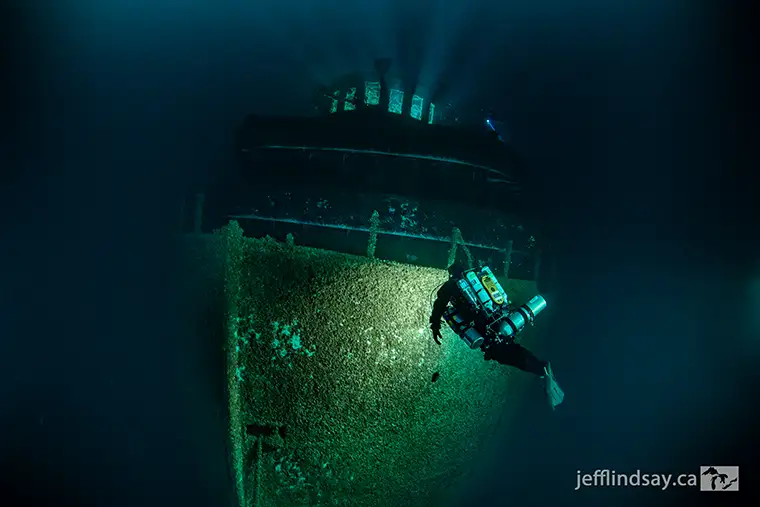
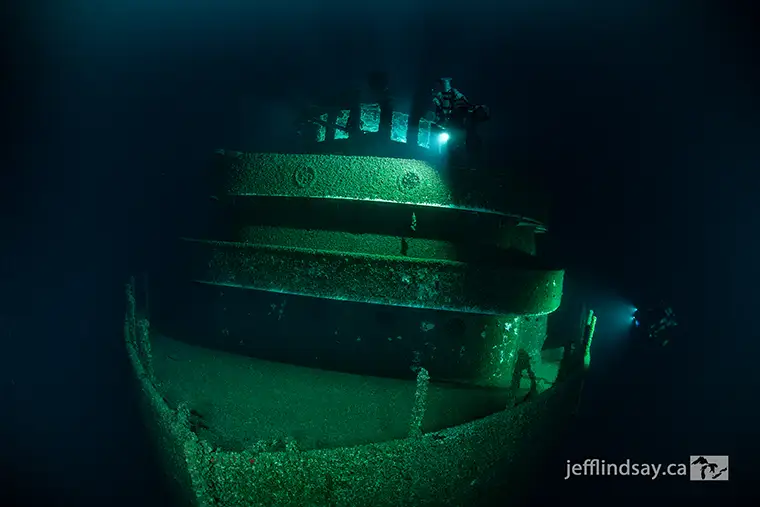
All too soon, we began our long ascent home where I was left alone with my thoughts for the next couple of hours—that and trying not to notice the cold working its way into my drysuit.
Visiting an intact shipwreck that’s as deep as the HMHS Britannic, larger than the SS Thistlegorm, and with a greater loss of life than either of these two, should make for a compelling story. However, the Carl D. Bradley remains largely elusive and unknown, even within the dive community. Add the complexity of water temps of 3° C/37° F at depth plus a remote location with no established surface support, and the Bradley will likely remain a sleeping giant that only a fortunate few get to witness firsthand.

For me, the legend of the Bradley endures. The history, tragedy, and scale of this shipwreck is balanced against the complexity and effort required for this dive. Even after seeing it in person, the Carl D. Bradley remains as mythical as ever.
* The Edmund Fitzgerald is the largest shipwreck to have ever occurred on the Great Lakes. Lying within Canadian waters, it is a restricted site under the Ontario Heritage Act of 2005, and diving operations are not permitted.
DIVE DEEPER
InDEPTH: An Ice Water Museum Named SS Ohio by Jeff Lindsay
InDEPTH: Picturing History by Becky Kagan Schott
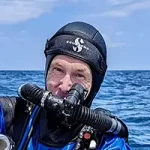
Growing up on the shores of the Great Lakes fostered a natural curiosity about the unexplored for Jeff Lindsay; learning to dive in 1990 led to a lifelong desire to visit and photograph the unknown and forgotten. With an almost limitless number of shipwrecks nearby, a natural progression into technical diving was required for the deeper and more remote locations. He’s been invited on numerous projects as team photographer around the world as well as being a keynote speaker at Diving Talks, Portugal. His biggest thrill is still visiting a shipwreck or cave and capturing some small part of its essence in a photograph. His website: www.jefflindsay.ca


















